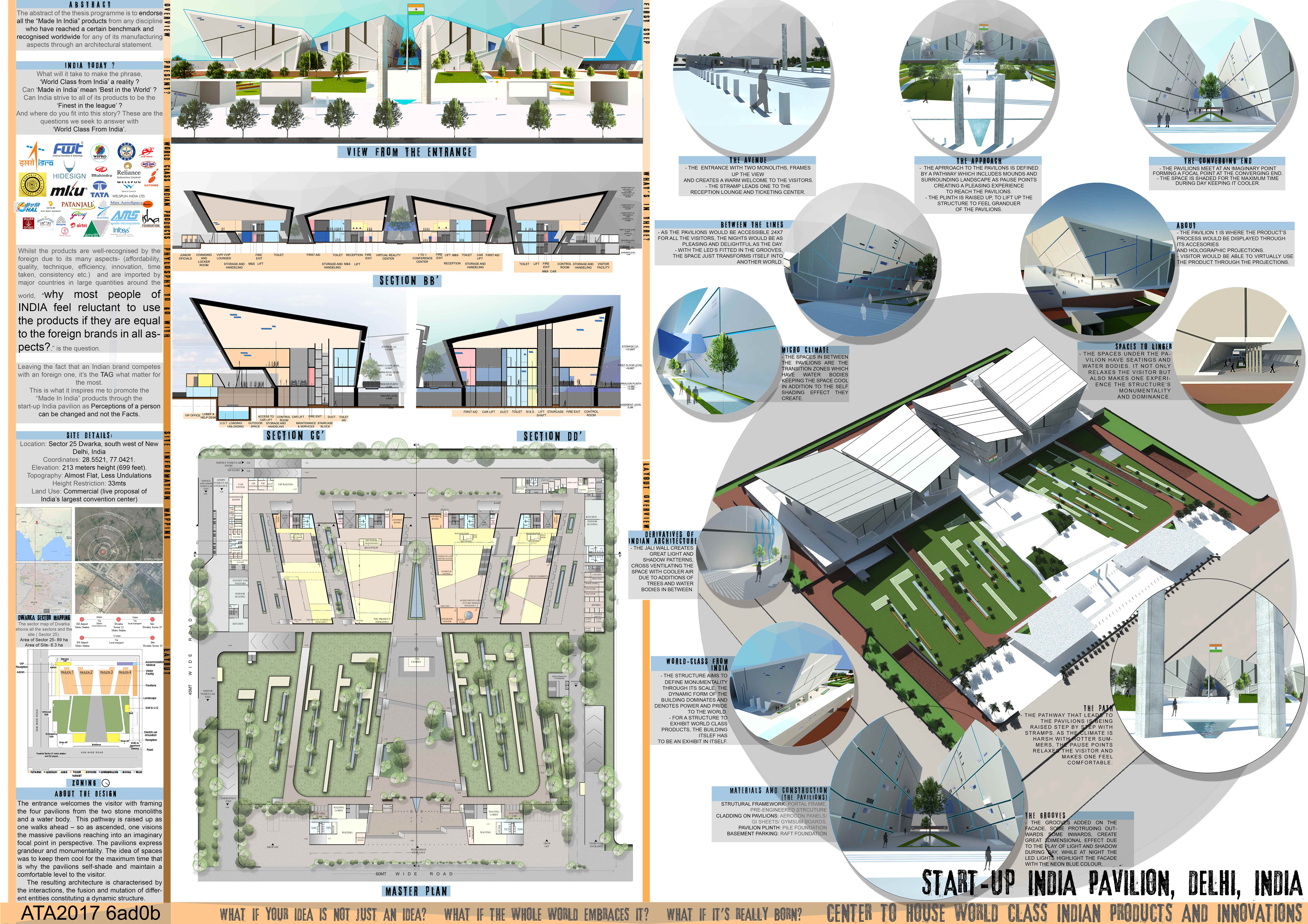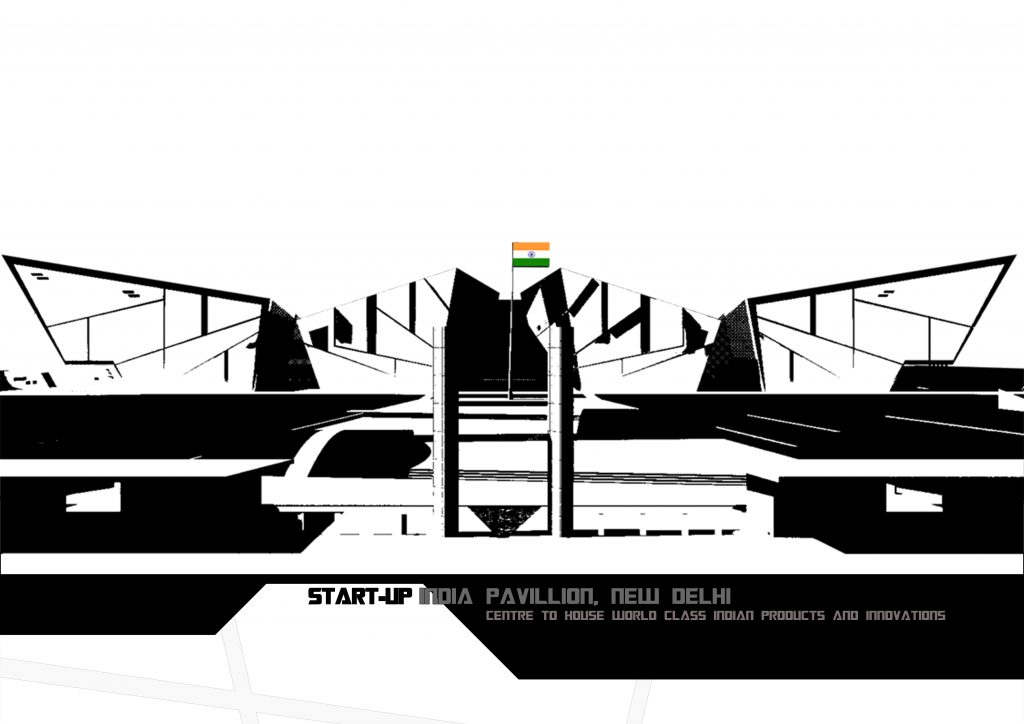Abstract:
The thesis endorses all the “Made In India” products from any discipline who have reached a certain benchmark and recognized world wide for any of its manufacturing aspects through exhibition pavilions. For the same, book case studies of Museum of Confluences, France and Maxxi Museum, Rome has been studied to learn what iconism stands for. Also, live case study of Hall Of Nations,Delhi by architect Raj Rewal was been conducted.
Objectives:
To influence, inspire and change the perspective of not only the foreigners but also the Indians by making aware of the innumerable products innovated and manufactured by India usually disregarded by some upon foreign products which have reached a valued position and made India proud.
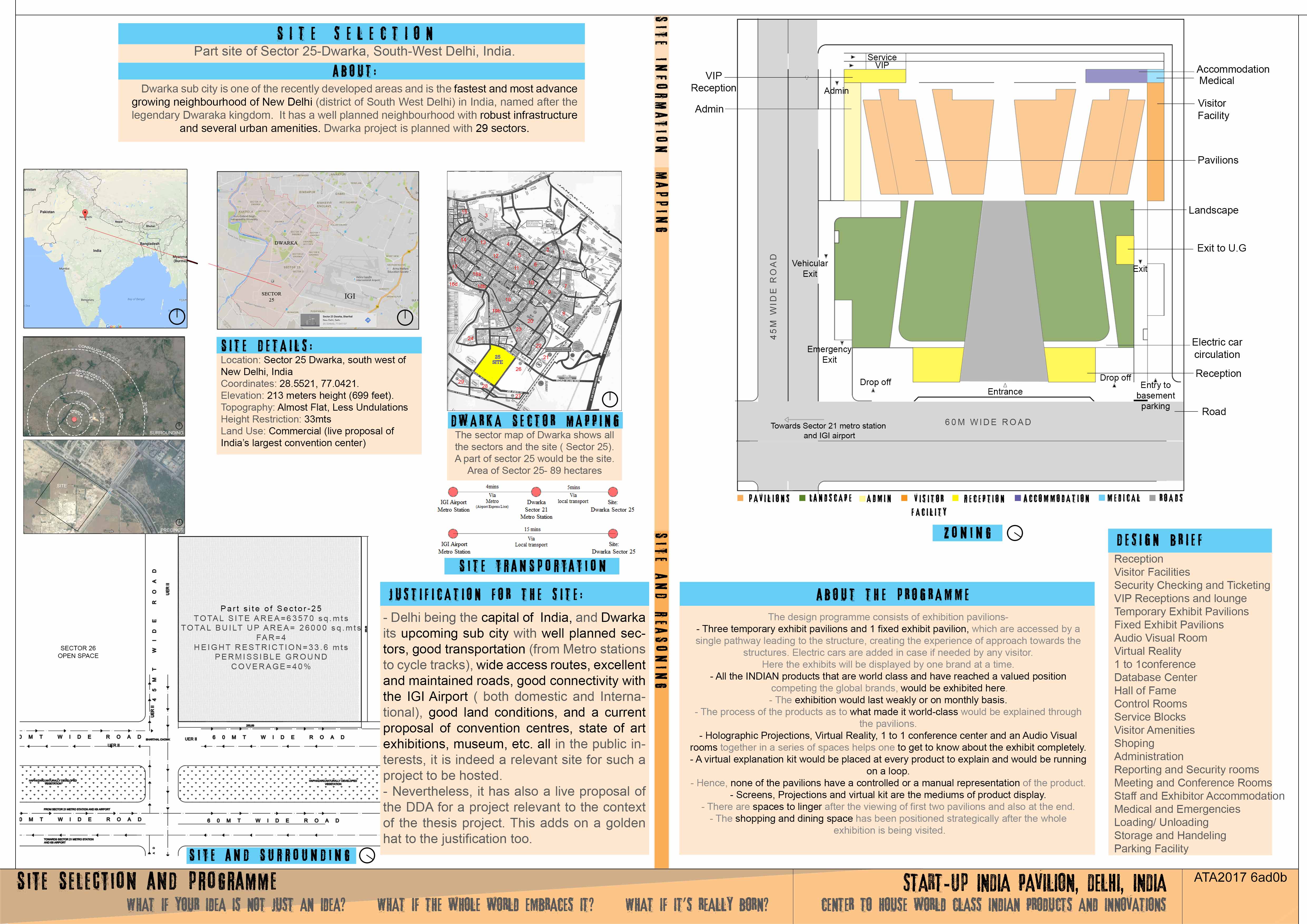
The project: The pavilions would basically abide exhibition halls that would endorse the Indian products in 3 categorize: Housing the top class Indian manufactured products: The ones, which have well recognition in the world and have harmonized with the world standards [ISRO, MKU, FWT (friction welding technologies), Gaitonde, etc].These products have achieved noticeable recognition and dominating foreign products world-wide. The exclusive products India has made: These may not be tagged as the best in the world, but one couldn’t find it anywhere than India. (Patanjali, Tata Nano, Yoga, etc.). These may not be the best as it may have alternatives of foreign brands in competition, but India feels proud to endorse them due to its origins in India. Revenue based Indian products: Those India products which have very high revenue/outcomes from their products(Tata, Reliance, etc).These companies have higher revenues than many of the leading brands in the world. It is a remarkable achievement and promoting it would inspire and provide knowledge to the visitor. So how would the center influence? It would give a renewed sense of respect and appreciation to the Indian products which may be known or unknown to some inspiring small scale start-ups. It is a matter of ‘Pride’ to push forward the vision of the manufacturers through the exhibits.So the world recognizes where India stands today. For a pavilion to endorse such products need a structure to be an ‘Exhibit in itself’.
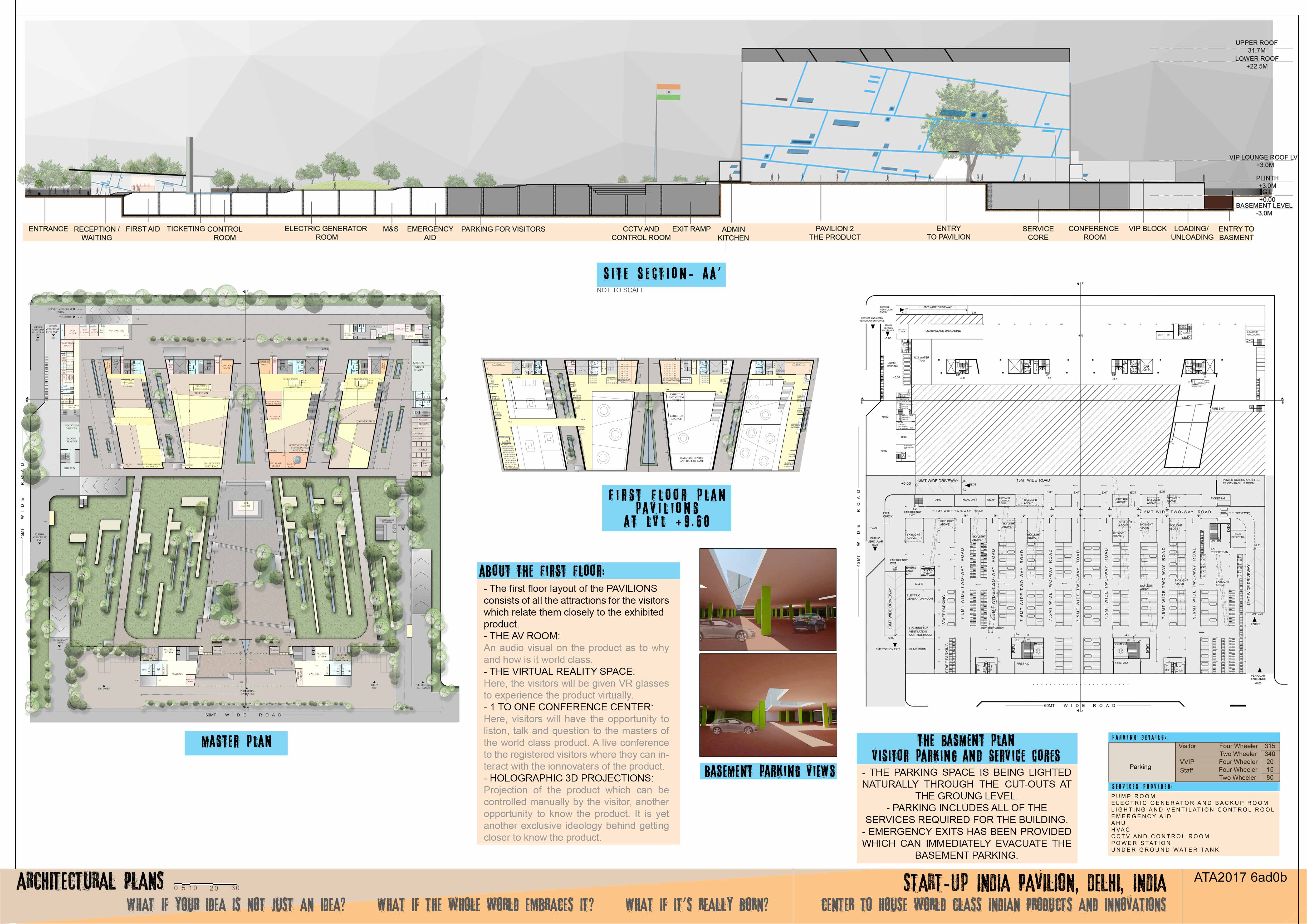
About the Programme: The design consists of exhibition pavilions- 3 which would have temporary exhibits changing monthly or weekly and 1 fixed in which the exhibits would be fixed, which are accessed by a pathway leading to the structure, creating the experience of approach.Electric cars are added in case if needed by any visitor.Here the exhibits will be displayed by one brand at a time. The process of the products as to what made it world-class would be explained through the pavilions. Holographic projections, Virtual Reality, 1 to 1 conference center and an Audio Visual room together in a series of spaces helps one to get to know about the exhibit completely. A virtual explanation kit would be placed at every product to explain and would be running on a loop.Hence, none of the pavilions have a controlled or a manual representation of the product. Screens, Projections and virtual kit are the medium of product display. There are spaces to linger after the viewing of first two pavilions and also at the end. The shopping and dining space has been positioned strategically after the whole exhibition is being visited. Area Statement: EXHIBITION PAVILIONS + Audio Visual Room + Virtual Reality + 1 to 1 Conference+Database Centre+Hall of Fame: 11760sq.mt TOTAL AREA (sq.mt) with parking: 35500sq.mt TOTAL SITE AREA (sq.mt): 73000sq.mt
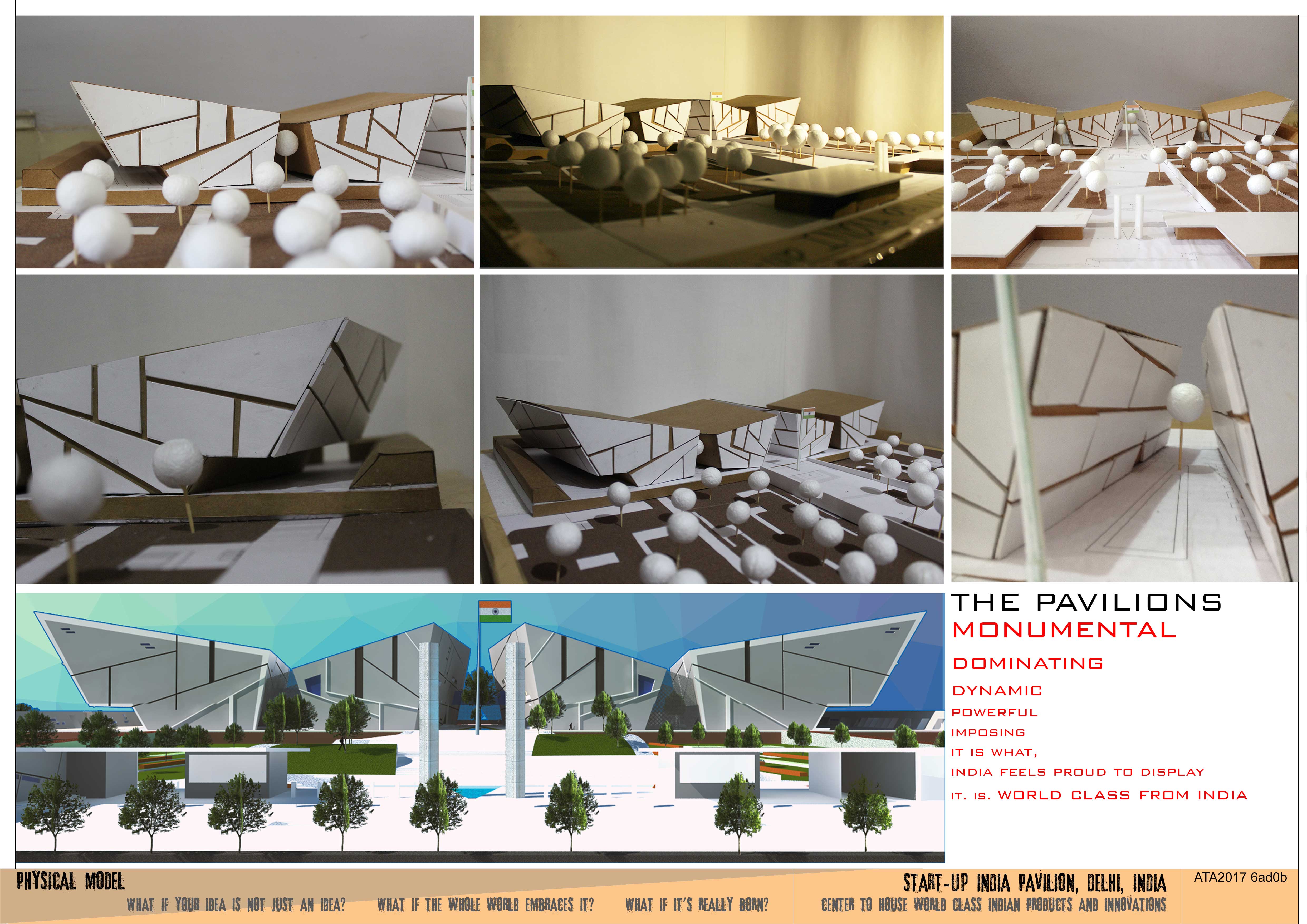
The Board:
